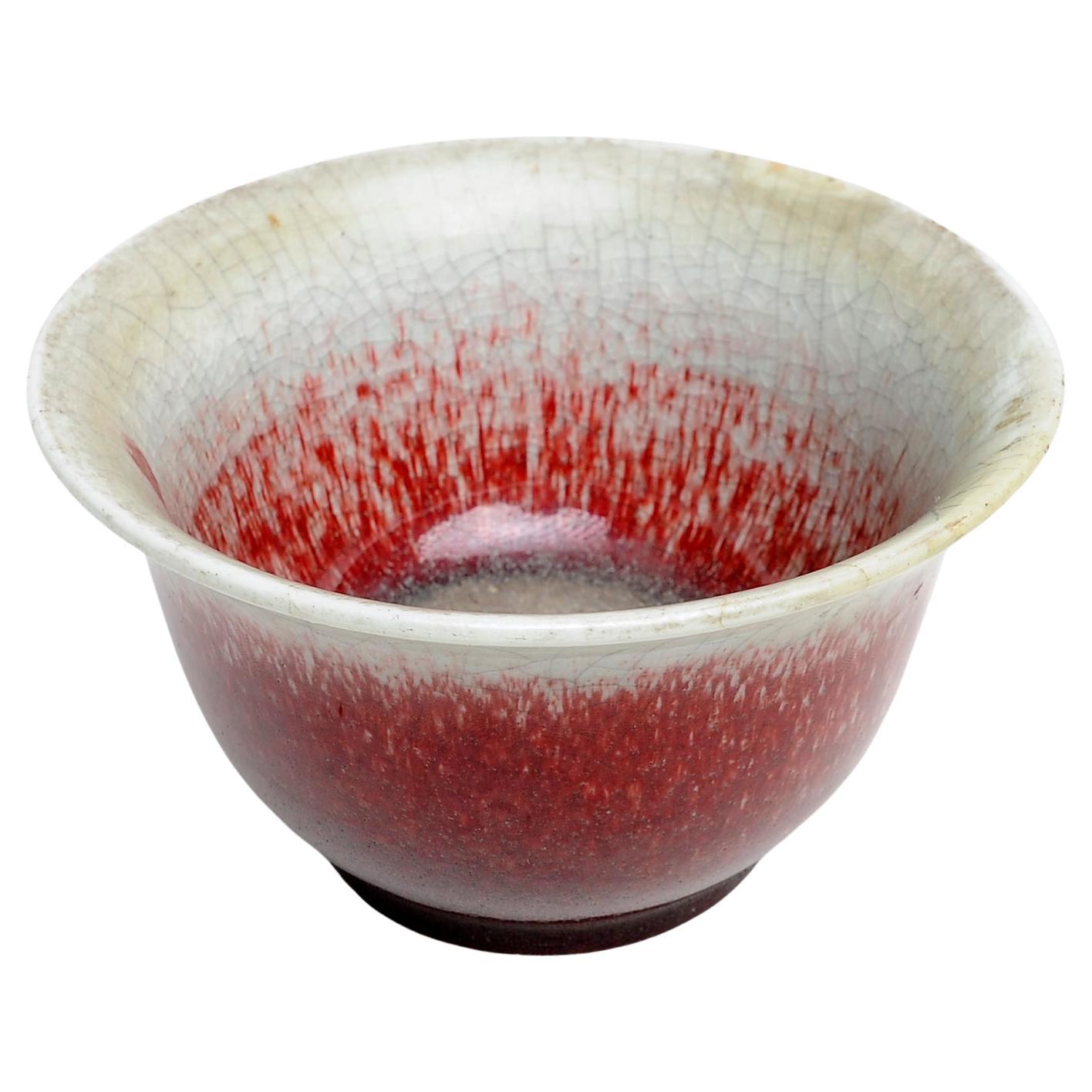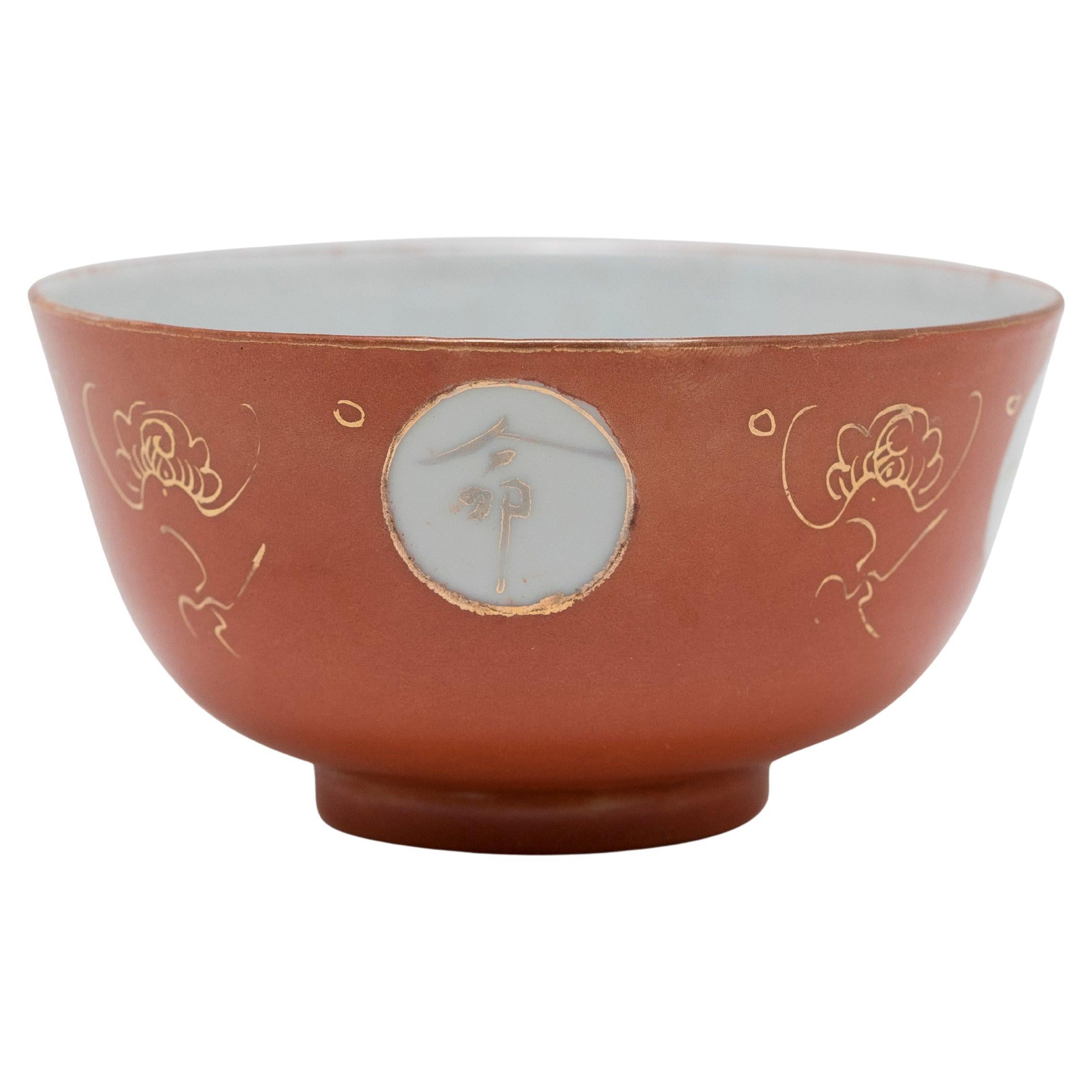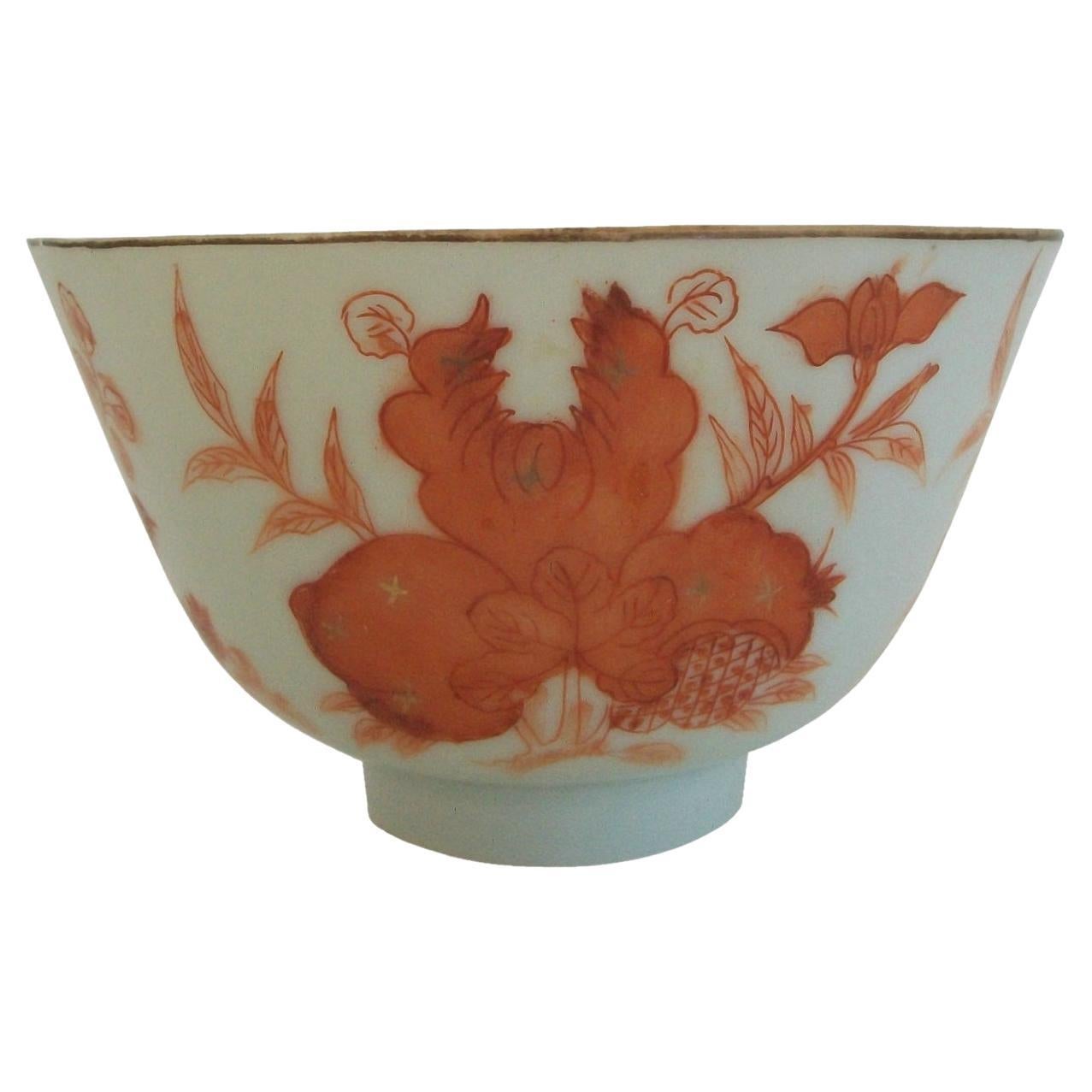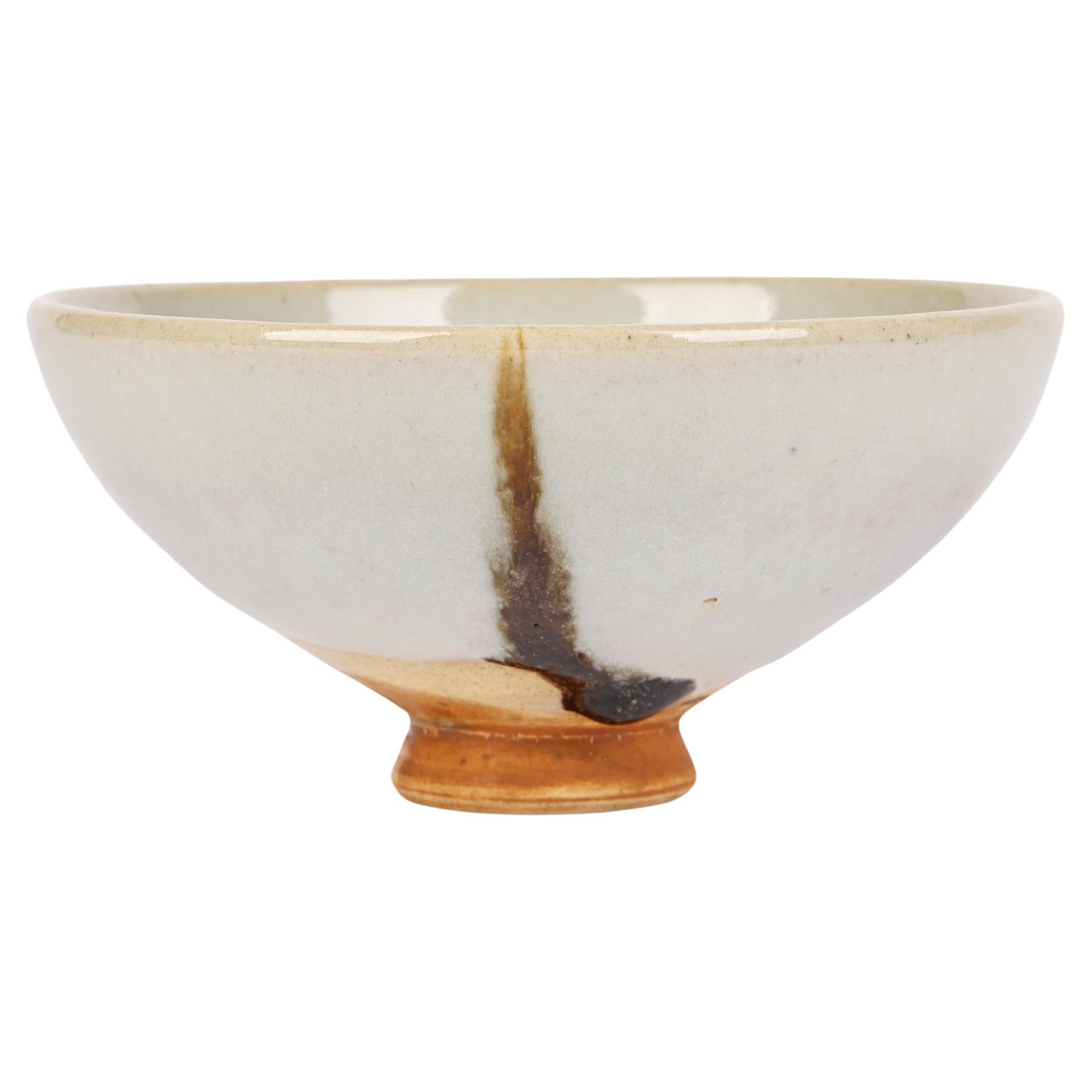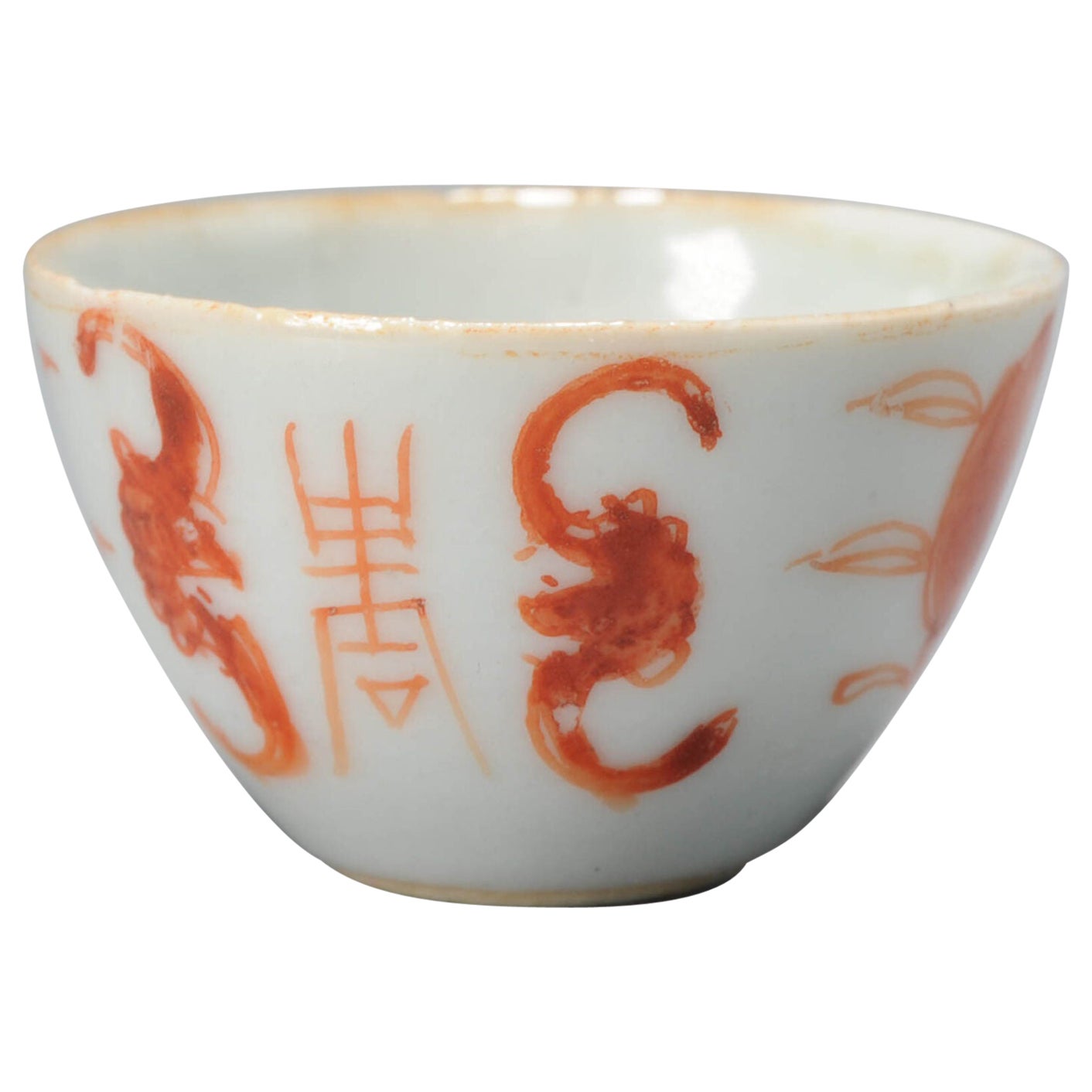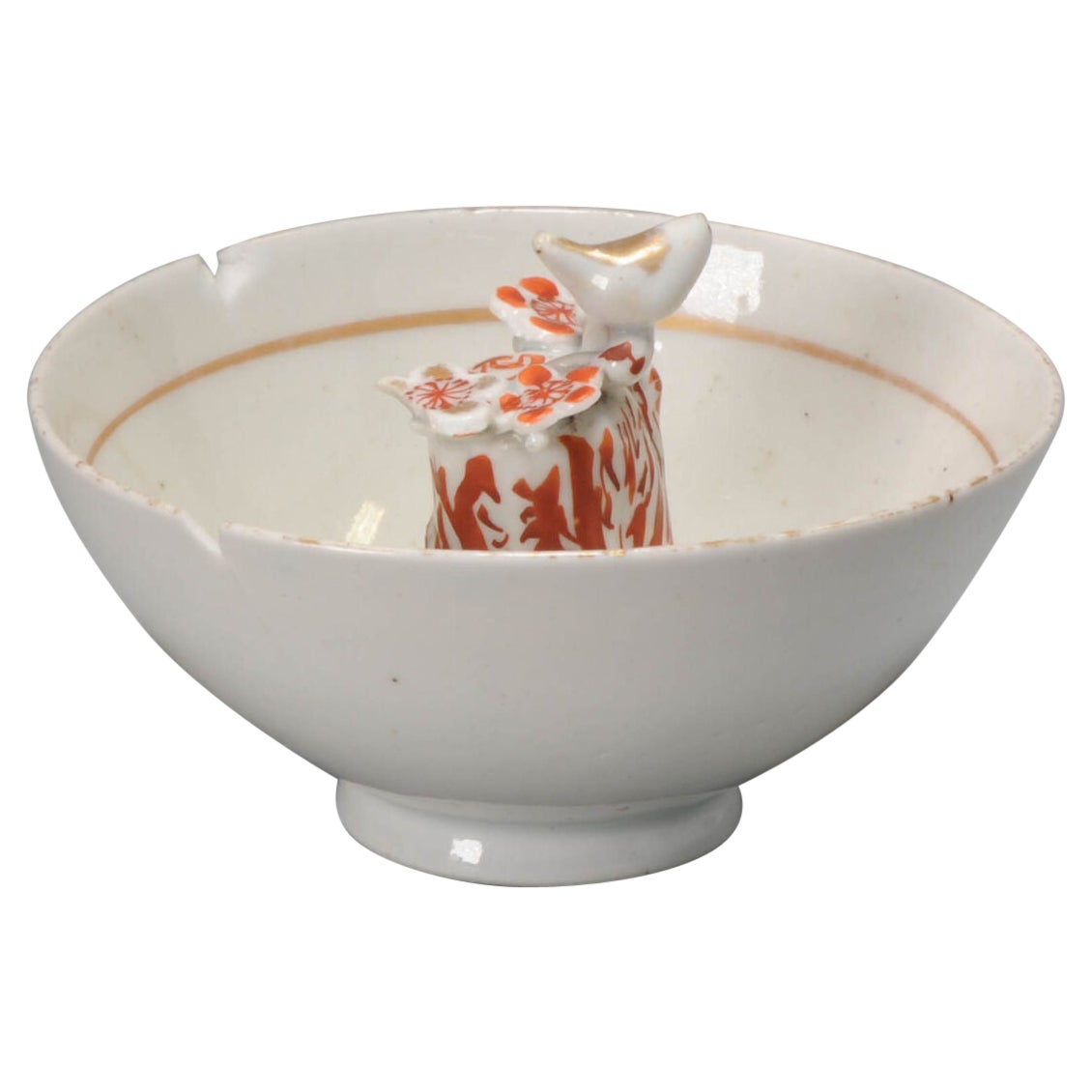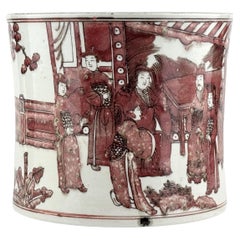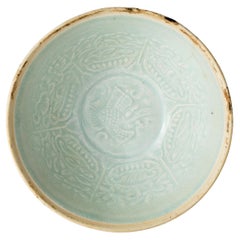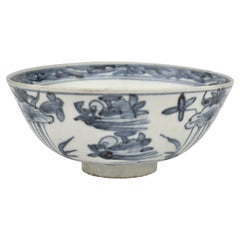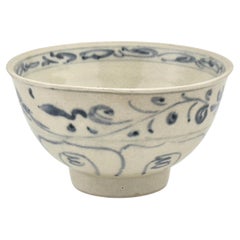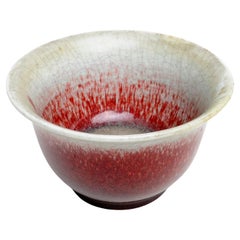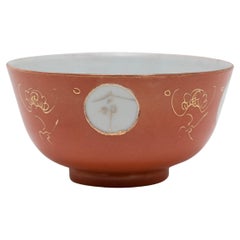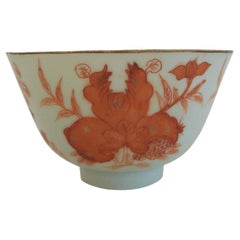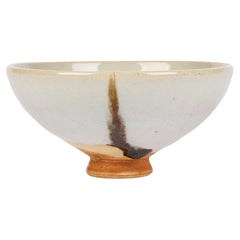Items Similar to A Copper-Red Ceramic Bowl with Auspicious Motifs, Ming-Early Qing Dynasty
Want more images or videos?
Request additional images or videos from the seller
1 of 17
A Copper-Red Ceramic Bowl with Auspicious Motifs, Ming-Early Qing Dynasty
$2,660
$3,80030% Off
£2,019.80
£2,885.4330% Off
€2,309.79
€3,299.7030% Off
CA$3,716.41
CA$5,309.1530% Off
A$4,133.45
A$5,904.9330% Off
CHF 2,158.36
CHF 3,083.3730% Off
MX$50,299.74
MX$71,856.7830% Off
NOK 27,565.57
NOK 39,379.3830% Off
SEK 25,851.64
SEK 36,930.9230% Off
DKK 17,238.87
DKK 24,626.9630% Off
Shipping
Retrieving quote...The 1stDibs Promise:
Authenticity Guarantee,
Money-Back Guarantee,
24-Hour Cancellation
About the Item
A copper-red produced in Jingdezhen, China, during the Ming to early Qing dynasty (15th–17th century). It features a copper red applied over a bluish-white glaze, which is glaze type of Ming Dynasty. The exterior is decorated with fishes, while the interior is inscribed with characters symbolizing longevity and blessings.
"寿 (shou, longevity)," "南山 (Nanshan, enduring like the southern mountain)," and "喜 (xi, joy)" at the center, forming a classic auspicious inscription (吉祥文, jixiangwen) that conveys wishes for longevity and blessings. The term "Nanshan" symbolizes endurance and longevity, while "xi" is commonly associated with celebrations and joyous occasions. Such inscriptions were frequently seen on porcelain from the late Ming to early Qing dynasty and were likely used in ceremonies celebrating weddings, birthdays, or longevity.
Period: Ming-Qing Dynasty
Medium: Copper Red and Blue and White Porcelain
Type: Bowl
Condition : Excellent
Size : 18.5cm(Diameter) , 8.5cm(Height)
Provenance : Acquired in late 1990s from Hongkong
- Dimensions:Height: 3.35 in (8.5 cm)Diameter: 7.29 in (18.5 cm)
- Style:Ming (Of the Period)
- Materials and Techniques:
- Place of Origin:
- Period:
- Date of Manufacture:Ming-Early Qing Dynasty
- Condition:Minor fading.
- Seller Location:seoul, KR
- Reference Number:1stDibs: LU9577243375202
About the Seller
4.8
Gold Seller
Premium sellers maintaining a 4.3+ rating and 24-hour response times
Established in 1999
1stDibs seller since 2023
38 sales on 1stDibs
Typical response time: <1 hour
- ShippingRetrieving quote...Shipping from: seoul, Korea South
- Return Policy
Authenticity Guarantee
In the unlikely event there’s an issue with an item’s authenticity, contact us within 1 year for a full refund. DetailsMoney-Back Guarantee
If your item is not as described, is damaged in transit, or does not arrive, contact us within 7 days for a full refund. Details24-Hour Cancellation
You have a 24-hour grace period in which to reconsider your purchase, with no questions asked.Vetted Professional Sellers
Our world-class sellers must adhere to strict standards for service and quality, maintaining the integrity of our listings.Price-Match Guarantee
If you find that a seller listed the same item for a lower price elsewhere, we’ll match it.Trusted Global Delivery
Our best-in-class carrier network provides specialized shipping options worldwide, including custom delivery.More From This Seller
View AllCopper Red Brushpot, Qing Dynasty, Kangxi Mark
Located in seoul, KR
This porcelain brush pot, crafted on a white body, is delicately decorated with copper red (hongcai 紅彩), depicting a figure in traditional attire amidst a landscape of pine trees, ro...
Category
Antique Early 18th Century East Asian Qing Ceramics
Materials
Copper
$1,800 Sale Price
40% Off
Qingbai Bowl with carving of crane, Song Dynasty
Located in seoul, KR
The crane, a traditional symbol of longevity and auspiciousness, is prominently placed at the center, creating a harmonious and aesthetically balanced effect. The border of the dish ...
Category
Antique 15th Century and Earlier Hong Kong Chinese Export Antiquities
Materials
Porcelain
$1,192 Sale Price
20% Off
Bowl with mandarin duck and lotus pattern design, Late Ming Era(16-17th century)
Located in seoul, KR
Bowl from the late Ming dynasty cargo. An identical piece is included on page 136 of the Bin Thuan catalog titled 'The Age of Discovery: Asian Ceramics Found...
Category
Antique 16th Century Vietnamese Ming Decorative Bowls
Materials
Ceramic, Porcelain
Vietnamese Blue And White Bowl Circa 15th Century
Located in seoul, KR
The artwork, with its foliage and floral motifs, suggests a connection to the natural world—a common theme in Vietnamese art. Such items were highly traded, and their recovery from shipwrecks helps us understand the extent of maritime commerce in Southeast Asia during the 15th and 16th centuries. This piece embodies the craftsmanship and aesthetic values of the period, providing insights into the cultural and economic contexts of its time.
Dates : 15th century Le Dynasty
Region : North Annam
Type : Bowl
Found/Acquired : Southeast Asia , South China Sea, Hoi An Ship
Reference : Double checked with reference to the original catalogue
Butterfield Treasures Hoi An Hoard Auction Catalogs / San Francisco Butterfields 2000
* Vietnamese trade ceramics
Around the mid-14th century, Vietnam developed its ceramics production technology by producing blue and white porcelain, and began to export it overseas. During this period, China Ming Dynasty implemented a policy of lifting the ban from 1371 to 1657 and restricted foreign trade. This served as a good opportunity in the trade history of Vietnamese ceramics...
Category
Antique 15th Century and Earlier Chinese Ming Antiquities
Materials
Ceramic, Stoneware
Three-glazed Earthenware dish circa 1725, Qing Dynasty, Yongzheng Reign
Located in seoul, KR
Painted with yellow, brown and green glazes against the straw-glazed ground, the cavettos with a broad brown-glazed band, the exteriors green-glazed.
Period : Qing Dynasty, Yongzhen...
Category
Antique 1720s Vietnamese Qing Decorative Bowls
Materials
Earthenware
Chinoiserie Teabowl Set Circa 1725, Qing Dynasty, Yongzheng Reign
Located in seoul, KR
The interior of the cups is adorned with intricate designs inspired by nature, such as flowers, trees, and fish. They are skillfully arranged to create a focal point at the base of e...
Category
Antique 1720s Vietnamese Chinoiserie Ceramics
Materials
Ceramic, Porcelain
$973 Sale Price
30% Off
You May Also Like
Ancient Chinese Bowl in Shaded Red
Located in Alessandria, Piemonte
O/3204 - Old Chinese bowl in shaded red: simple and interesting for collectors.
Now I want to close my activities, therefore I accept offers. Thanks.
Category
Early 20th Century Chinese Other Ceramics
Materials
Ceramic
Gilt Chinese Persimmon Bowl
Located in Chicago, IL
Dated to the Republic period (1912-1949), this bowl is beautifully decorated with a rich, persimmon-orange glaze accented by gilt brushwork. Wrapped around the center of the bowl are...
Category
Mid-20th Century Chinese Decorative Bowls
Materials
Porcelain
Iron Red & Gilt Decorated Porcelain Bowl - Guangxu Mark, China, 20th Century
Located in Chatham, ON
Antique iron red (orange) and gilt decorated porcelain bowl - featuring hand painted bats surrounding a shou character beside peaches and scrolling foliage - gilded border edge - Gua...
Category
Early 20th Century Chinese Chinese Export Ceramics
Materials
Porcelain
Chinese Jun Ware Streak Glazed Art Pottery Bowl
Located in Bishop's Stortford, Hertfordshire
A very stylish good quality Chinese Jun Ware pottery bowl decorated with streaked glazes on a red and pale blue glazed ground dating from the latter 19th o...
Category
Antique 19th Century Chinese Other Ceramics
Materials
Pottery
Chinese Porcelain Symbol China Antique Kitchen Qing Bowl, 19 Century
Located in Amsterdam, Noord Holland
Sharing with you this lovely bowl
Additional information:
Material: Porcelain & Pottery
Type: Plates
Category: Famille Rose
Emperor: Guangxu (1875-1908)
Region of Origin: China
Peri...
Category
Antique 19th Century Chinese Qing Serving Bowls
Materials
Porcelain
$238 Sale Price
20% Off
Antique Chinese Porcelain Copper Red 'Trick Cup', 18/19th Century
Located in Amsterdam, Noord Holland
"Trick cup”, also know as « porcelain surprise », « Gong Dao Bei », « don`t be greedy cup », « fairness cup » or « puzzle cup ».
With a beautiful hand carved scene of a bird on a br...
Category
Antique 19th Century Chinese Decorative Bowls
Materials
Porcelain
$1,998 Sale Price
20% Off
More Ways To Browse
Red Ceramic Bowl
Dynasty Bowl
Ming Blue White
Ming Dynasty Porcelain
Chinese Qing Bowl
Copper Fish
Ming Dynasty Blue
Copper Bowl Used
Antique Copper Bowl Copper
Ming Dynasty Glazed
Red Chinese Bowl
Ming Dynasty Blue And White Porcelain
Antique Ceramic Fish
Ming Dynasty Furniture 16th Century
White Ceramic Fish
Antique Chinese Blue And White Bowl
Antique Chinese Blue And White Porcelain Bowl
Antique Fish Bowl
